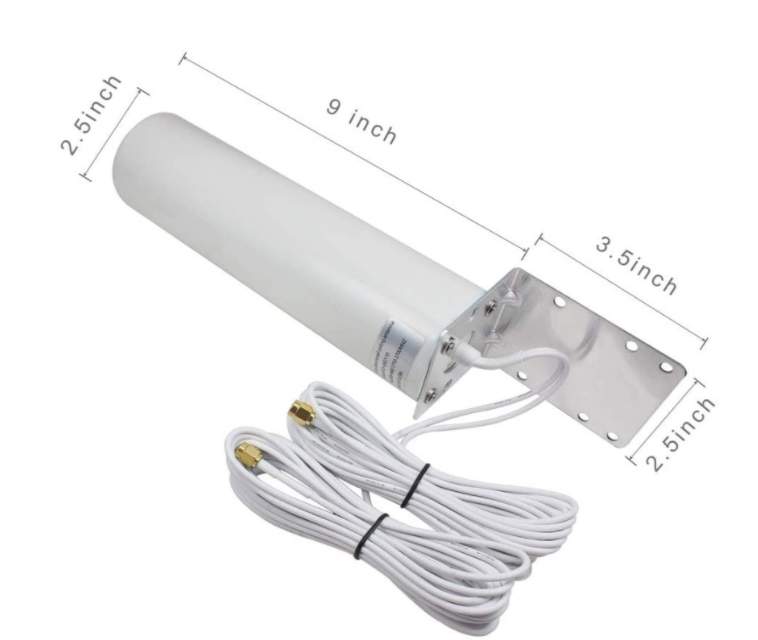The operating frequency range of the antenna
The operating frequency range (bandwidth) of the antenna

Whether it is a transmitting antenna or a receiving antenna, they always operate within a certain frequency range (bandwidth). The frequency of the antenna
There are two different definitions of band width------
One refers to the operating bandwidth of the antenna under the condition of a standing wave ratio SWR ≤ 1.5;
One refers to the bandwidth within the range of 3 decibels of antenna gain decrease.
In mobile communication systems, the former definition is usually followed, specifically, the bandwidth of the antenna is the standing wave ratio of the antenna
The operating frequency range of the antenna when the SWR does not exceed 1.5.
Generally speaking, there are differences in antenna performance at various frequency points within the working bandwidth, but the performance degradation caused by these differences is acceptable.
*Common base station antennas, repeater antennas, and indoor antennas for mobile communication
Basic knowledge of plate antenna
Whether it is GSM or CDMA, the plate antenna is the most commonly used type of extremely important base station antenna. This type of antenna
The advantages are: high gain, good sector pattern, small back lobe, convenient vertical plane pattern control, reliable sealing performance, and long service life.
Plate antennas are often used as user antennas for repeaters, and the corresponding antenna model should be selected based on the range of the functional sector.
2 High gain grid shaped parabolic antenna
From the perspective of cost-effectiveness, people often choose grid shaped parabolic antennas as the main antenna for repeaters. Due to the good quality of the parabolic mask
Due to its good focusing effect, the parabolic antenna has strong focusing ability. A grid shaped parabolic antenna with a diameter of 1.5 meters can achieve a gain of G=20 dB in the 900 MHz frequency band. It is particularly suitable for point-to-point communication, for example, it is often chosen as a donor antenna for repeaters.
The parabolic surface adopts a grid like structure, firstly to reduce the weight of the antenna, and secondly to reduce wind resistance.
Parabolic antennas are generally able to provide a front to back ratio of no less than 30 dB, which is also a technical requirement that the repeater system must meet for the receiving antenna to prevent self-excitation.
3 Yagi directional antenna
Yagi directional antenna has the advantages of high gain, light structure, convenient erection and low price. Therefore, it is particularly suitable for point-to-point communication, such as being the preferred antenna type for outdoor reception antennas in indoor distribution systems.
The more elements of Yagi directional antenna, the higher its gain. Usually, 6-12 elements of Yagi directional antenna are used, and its gain
Up to 10-15 dB.
4 indoor ceiling mounted antennas
Indoor ceiling mounted antennas must have advantages such as lightweight structure, beautiful appearance, and easy installation.
The indoor ceiling mounted antennas seen in the current market have many designs, but the purchase and manufacturing of their inner cores are almost the same. This type of ceiling
Although the internal structure of the antenna is very small, because it is based on the antenna broadband theory, aided by computer design, and debugged by network analyzer, it can well meet the requirements of standing wave ratio in a very wide operating band. According to the national standard, the standing wave ratio index of the antenna operating in a very wide band is VSWR ≤ 2. Of course, it is better to achieve a VSWR ≤ 1.5. By the way, indoor ceiling mounted antennas belong to low gain antennas, typically G=2 dB.
5 indoor wall mounted antennas
Indoor wall mounted antennas must also have advantages such as lightweight structure, beautiful appearance, and easy installation.
The indoor ceiling mounted antennas seen in the current market have many designs, but the purchase and manufacturing of their inner cores are almost the same. The internal structure of this wall mounted antenna belongs to the air dielectric microstrip antenna. Because of the auxiliary structure of broadening antenna bandwidth, aided design by computer and debugging by network analyzer, it can better meet the requirements of working broadband. By the way, indoor wall mounted antennas have a certain gain, approximately G=7 dB.





